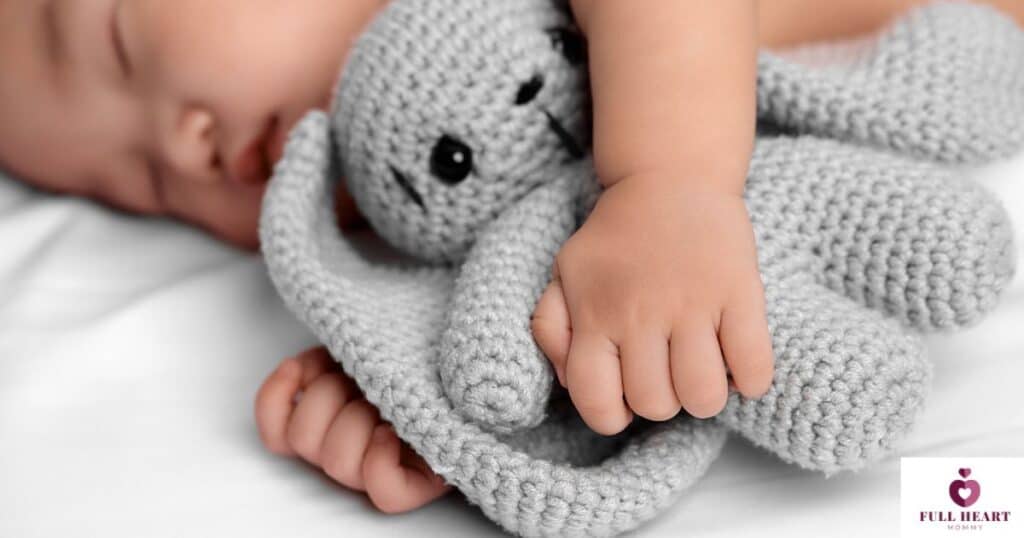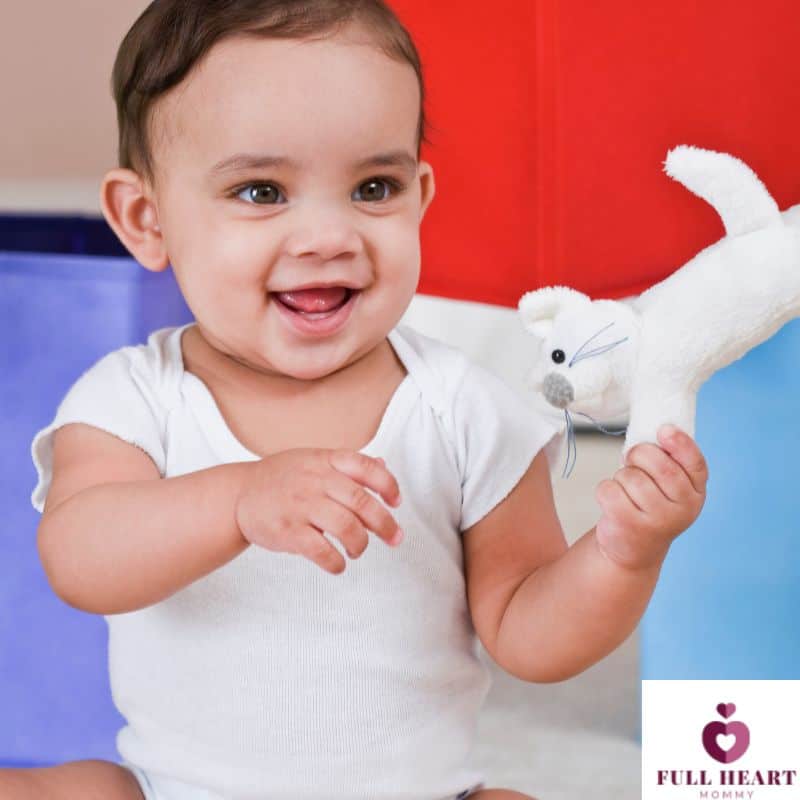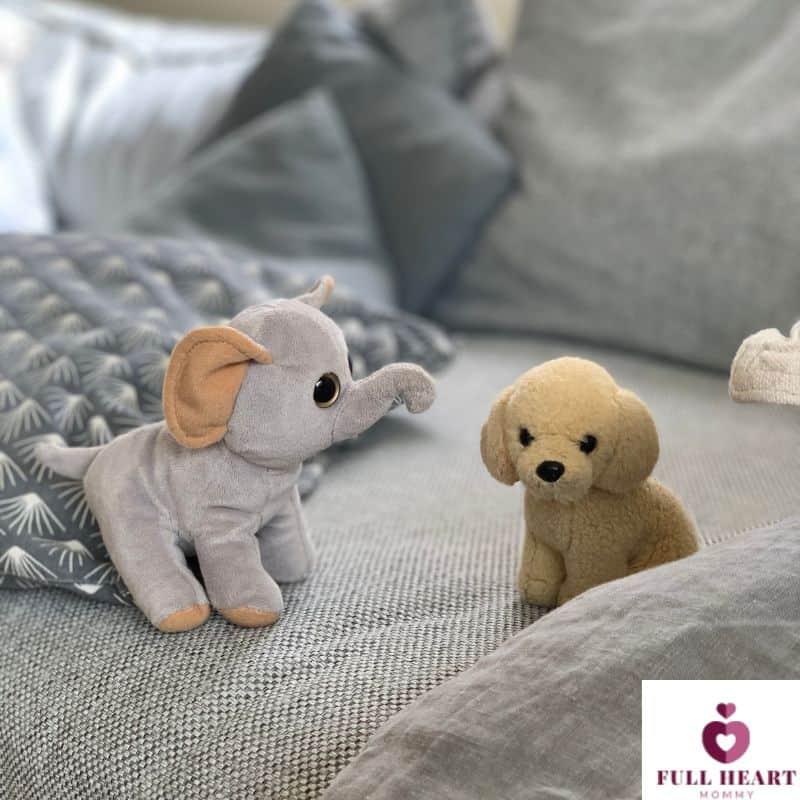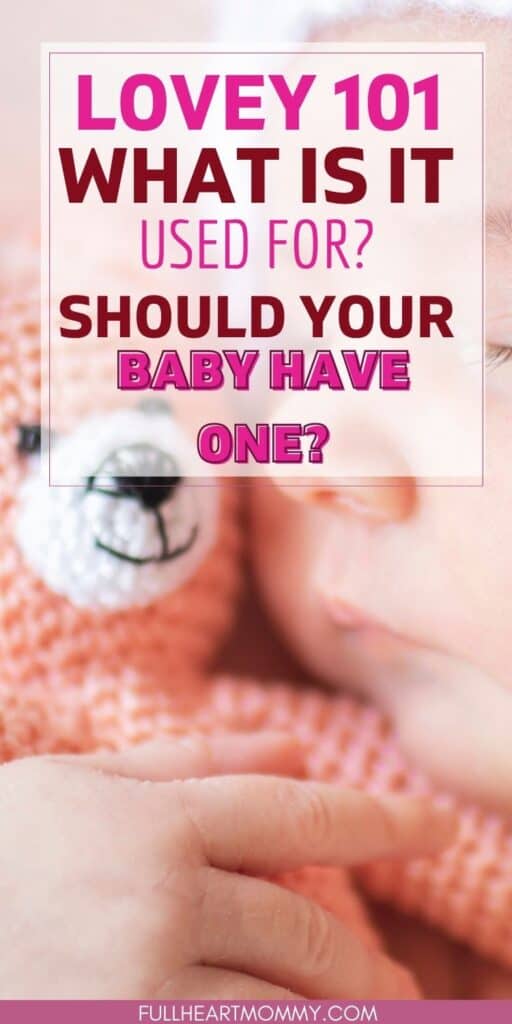A lovey is a comfort object that many children use to help them feel secure and calm. It is a small, soft item, such as a blanket or stuffed animal, that a child can hold and cuddle. Loveys can be especially helpful during times of stress or anxiety, such as when a child is away from home or going through a transition.
While loveys are often associated with young children, they can be used by kids of all ages. Some children may become attached to a lovey as babies and continue to use it for years, while others may develop a lovey later on in childhood.
Loveys can provide a sense of familiarity and comfort in unfamiliar or challenging situations and can help children feel more independent and confident as they navigate the world around them.

What is a Lovey?
A lovey, also known as a security blanket or comfort object, is a small soft object that a child forms an attachment to and uses to self-soothe during times of stress or anxiety.
It can be a stuffed animal, a blanket, a toy, or any other object that the child finds comfort in. Loveys are often used as transitional objects to help ease a child’s separation anxiety when they are away from their parents or caregivers.
Definition And Age Appropriateness
According to Dictionary.com, a lovey is defined as “sweetheart; dear (used as a term of endearment).” However, in the context of child development, a lovey is a special object that provides comfort and security to a child.
A lovey can become a source of comfort and familiarity for a child, helping them feel safe and secure in new situations.
What age is appropriate for a lovey?
Loveys are often introduced to babies around 7 to 8 months of age when they start to develop a sense of object permanence and begin to understand that objects still exist even when they are out of sight.
However, there’s no specific age where a lovey becomes inappropriate. Many loveys are designed for infants and toddlers, so older children may not find them as appealing. It’s completely normal for children to eventually outgrow their loveys and move on to other forms of comfort and self-soothing
Types of Loveys

There are many different types of loveys that a child can form an attachment to. Some common types include:
- Stuffed animals: Soft, cuddly stuffed animals are a popular choice for loveys. Children often enjoy hugging and snuggling with them, and they can provide a sense of comfort and security.
- Blankets: Soft, cozy blankets can also make great loveys. Children may enjoy rubbing the fabric between their fingers or snuggling up with the blanket for comfort.
- Toys: Some children may form attachments to specific toys, such as a favorite doll or action figure. These toys can provide a sense of familiarity and comfort in new situations.
- Other objects: Children can form attachments to a wide variety of objects, from a favorite t-shirt to a special rock they found outside. As long as the object provides comfort and security to the child, it can serve as a lovey.
It’s important to note that not all children will form attachments to loveys, and that’s okay. Every child is different, and some may find comfort in other ways.
What Is The Point Of A Lovey?
Here are some of the key benefits of loveys:
Comfort and Security
One of the primary benefits of loveys is that they can provide a sense of comfort and security for young children. Many children become attached to a particular stuffed animal, blanket, or other object, and this object can serve as a source of comfort when the child is feeling anxious or upset.
Transitional Object
Loveys can also serve as transitional objects for children who are going through important developmental milestones, such as starting preschool or transitioning from a crib to a toddler bed or big kid bed.
Sleep Aid
Many children find it easier to fall asleep and stay asleep when they have a lovey with them. These objects can provide a sense of comfort and security that helps children feel more relaxed and calm at bedtime. Additionally, having a lovey can help children learn to self-soothe and be an alternative to pacifiers, which can be an important skill for promoting healthy sleep habits.
How to Introduce a Lovey
Giving a lovey to a baby can be a simple process, but it’s important to do it in a way that helps the baby feel comfortable and secure. After all, there are so many new things being shown to them daily and they are figuring it all out. Here are some tips on how to introduce a lovey to your baby.
Choosing the Right Lovey
There are so many choices, but how to choose a lovey for baby? When choosing a lovey, there are a few things to keep in mind. First, make sure it’s safe and appropriate for your baby’s age.
Avoid any loveys with small parts that could be a choking hazard. Also, consider the material of the lovey. Soft, cuddly fabrics like fleece or cotton are good choices.
It’s also a good idea to choose a lovey that is easy to clean. Babies tend to drool and spit up, so a lovey that can be machine washed and dried is ideal.
Finally, consider the size and shape of the lovey. A small, lightweight lovey is easier for a baby to hold and carry around.
Introducing the Lovey
When introducing a lovey to your baby, it’s best to do it gradually. Start by placing the lovey near your baby during playtime or naptime. Let your baby touch and explore the lovey on their own.
Once your baby is comfortable with the lovey, you can start incorporating it into your baby’s bedtime routine. For example, you can place the lovey in your baby’s crib or bassinet during naptime or bedtime.
It’s also a good idea to use the lovey as a comfort object during times of stress or anxiety, such as when your baby is getting a shot or going through a difficult transition like starting daycare.
Remember, every baby is different, and some babies may take longer to develop an attachment to a lovey than others. Be patient and keep trying, and eventually, your baby will find comfort in their lovey.

When to Stop Using a Lovey
Attachment to a lovey can be strong. I mean, have you ever seen a meltdown when your child can’t find their lovey?
But if you are considering when it’s appropriate to stop their child from using a lovey, there are a couple of things to think about.
Age Range
According to BabyCenter, a child’s need for a lovey will peak between 18 to 24 months, and then start to fade away. By the time a child reaches four years old, they may no longer need a lovey to feel secure. However, every child is different, and some may continue to rely on their lovey for comfort well into their elementary school years.
It’s important to note that if your child is still using a lovey past the age of four, it may be worth discussing with their pediatrician. Not necessarily because it’s a cause for concern, but it’s important to ensure that your child is developing healthy emotional coping mechanisms.
Gradual Weaning
When it comes to weaning your child off of their lovey, it’s a good idea to take a gradual approach. Suddenly taking away their comfort object can cause anxiety and distress, which can be detrimental to their emotional development.
Instead, try gradually reducing the amount of time your child spends with their lovey. For example, you could limit its use to naptime and bedtime, and gradually reduce the amount of time it’s available during the day.
You can also try introducing other comfort objects, such as a special blanket or stuffed animal, to help your child transition away from their lovey. This can provide them with a sense of security while still allowing them to develop healthy emotional coping mechanisms.
There is no definite age, rule, or process for when to stop using a lovey. It’s important to consider your child’s emotional attachment and take a gradual approach to weaning them off of their comfort object.
By doing so, you can help your child develop healthy emotional coping mechanisms while still providing them with the comfort and security they need.


